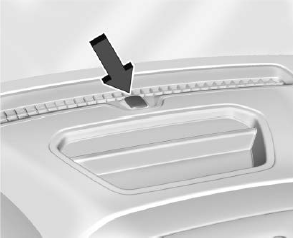Chevrolet Silverado: Reporting Safety Defects / Reporting Safety Defects to the United States Government
If you believe that your vehicle has a defect which could cause a crash or could cause injury or death, you should immediately inform the National Highway Traffic Safety Administration (NHTSA) in addition to notifying General Motors.
If NHTSA receives similar complaints, it may open an investigation, and if it finds that a safety defect exists in a group of vehicles, it may order a recall and remedy campaign. However, NHTSA cannot become involved in individual problems between you, your dealer, or General Motors.
To contact NHTSA, you may call the Vehicle Safety Hotline toll-free at 1-888-327-4236 (TTY: 1-800-424-9153); go to http://www.safercar.gov; or write to:
Administrator, NHTSA 1200 New Jersey Avenue, S.E. Washington, D.C. 20590
You can also obtain other information about motor vehicle safety from http://www.safercar.gov.
 Reporting Safety Defects to the Canadian Government
Reporting Safety Defects to the Canadian Government
If you live in Canada, and you believe that the vehicle has a safety defect,
notify Transport Canada immediately, and notify General Motors of Canada Company...
Other information:
Chevrolet Silverado 2019-2025 Owners Manual: Center High-Mounted Stoplamp (CHMSL) and Cargo Lamp
This procedure is for the regular cab only. For crew cab and double cab see your dealer. Cargo Lamp Bulbs Center High-MountedStoplamp (CHMSL) Bulb To replace one of these bulbs: Remove the two screws and lift off the lamp assembly...
Chevrolet Silverado 2019-2025 Owners Manual: Climate Control Systems
The heating, cooling, and ventilation in the vehicle can be controlled with this system. 1. Fan Control 2. MAX Defrost 3. Air Delivery Mode Controls 4. A/C (Air Conditioning) 5. TEMP (Temperature Control) 6. Recirculation 7. Rear Window Defogger (If Equipped) or Heated Mirrors (If Equipped) : Turn clockwise or counterclockwise to increase or decrease the fan speed...
Categories
- Manuals Home
- 4th Generation Silverado Owners Manual
- 4th Generation Silverado Service Manual
- Instrument Panel Fuse Block (Right)
- Programming Transmitters to the Vehicle
- Steering Column Lock
- New on site
- Most important about car
Vehicle Alarm System

The indicator light, on the instrument panel near the windshield, indicates the status of the system.

